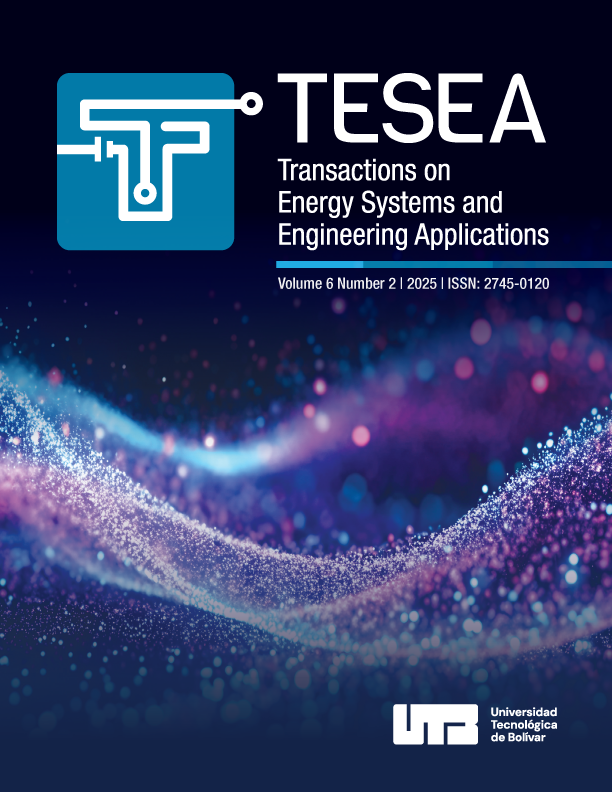Thermal conductivity determination in Fe78Si9B13/GNP/Epoxy composites by observation of samples and use of ad-hoc software: a new approximation methodology
DOI:
https://doi.org/10.32397/tesea.vol6.n2.902Keywords:
Thermal conductivity, Thermal diffusivity, porosity, epoxy, composite, Graphene Nanoplatelets, Magnetic particlesAbstract
This study investigated the thermal conductivity (k) of composites composed of Fe78Si9B13 microparticles (weight fractions: 10%, 15%, and 25%) and graphene nanoplatelets (GNP) (weight fractions: 0%, 1.0%, and 1.5%) embedded in a transparent epoxy matrix. Nine cylindrical samples (7 mm diameter and 2 mm length) were prepared. Thermal conductivity was determined by measuring the thermal diffusivity using the flash technique and applying the relevant relationship between the two parameters. Because some samples contained pores, the measured diffusivity was corrected for porosity by using a novel method developed by the authors. This method allowed the estimation of the composite percentage porosity based on the Young's modulus (E) of the sample. This correction eliminates the influence of porosity on the calculated diffusivity value, allowing determination of the intrinsic diffusivity of the composite material. Finally, each sample's thermal conductivity was calculated using the diffusivity values. The values of the estimated parameters were compared with those determined by other well-known and established methods, and practically the same results were obtained. These comparative calculations demonstrated the efficiency of the proposed method. The results demonstrate the effectiveness of this method in correcting the effects of porosity on the thermal conductivity measurements in the studied samples.
Downloads
Downloads
Published
How to Cite
Issue
Section
License
Copyright (c) 2025 Marcelo Ruben Pagnola, Jairo Useche, Javier Faig, Ricardo Martinez García

This work is licensed under a Creative Commons Attribution 4.0 International License.
Authors retain copyright and grant the journal right of first publication with the work simultaneously licensed under a Creative Commons Attribution 4.0 International License, which allows others to share the work with an acknowledgment of the work's authorship and initial publication in this journal.
















